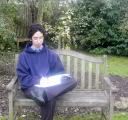Graduate 158: BT 25: Introduction to Chapter Three, Subdivision B
Subdivision B. A Contrast between our Analysis of Worldhood and Descartes' Interpretation of the World
[Introduction]
Our investigation into the concept and structure of worldhood is proceeded by gradual steps. It begins by looking at an entity within-the-world and only later taking in the world as a whole. We shall try to clarify this approach by comparing it to Descartes' ontology of the world and to his method of investigation. In this, we shall try to bring out the ontological 'foundations' that (unknowingly) formed the foundation of that ontology and of those that followed.
Basically, Descartes sees extensio (i.e. extension) as the most fundamental ontological category in the world. Heidegger will look at his account and also attempt to use it as a way of negatively supporting his own account of the spatiality of the environment and of Dasein itself. He plans to do this because he takes extension to be one of the constituents of spatiality, which is constitutive for the world.
"With regard to Dascartes' ontology there are three toopics which we shall treat: 1. the definition of the 'world' as res extensa (Section 19); 2. the foundations of this ontological definition (Section 20); 3. a hermeneutrical discussion of the Cartesian ontology of the 'world' (Section 21). The considerations which follow will not have been grounded in full detail until the 'cogito sum' has been phenomenologically destroyed. (See Part Two, Division 2.)" (BT 123/89) [1]
--
FOOTNOTES:
[1] Part Two, Division 2 was never published.
--
God is in this place,
And that reality, seen and understood by the grace of God in Christ Jesus through the work of the Holy Spirit, makes all the difference in the world.


0 Comments:
Post a Comment
<< Home